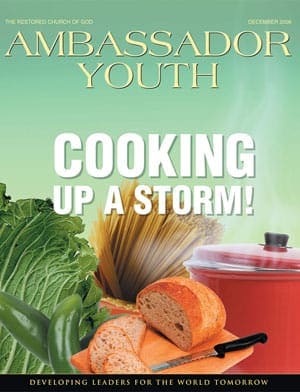The Philippines is a land of myriad wonders. Its picturesque geography, rich history and vibrant culture all attest to the country’s magnificent uniqueness.
Strategically located in the heart of Southeast Asia and surrounded by the Pacific Ocean, the “Pearl of the Orient” boasts of white-sand beaches, three-layered virgin rainforests, glorious sunsets, scenic rock formations, a mild tropical climate on the coastal plains and cool mountain weather farther inland. Of the 7,107 islands that make up the mountainous Philippine archipelago, only 3,144 are named, and only about a thousand are actually inhabited. And, with its estimated 86 million-strong population, it is counted as the second largest English-speaking nation in the world!
So, what’s it like to be a teen in the Philippines?
Tropical Paradise
For the young Filipino, acquiring a college education is imperative to securing a good job in the future. Filipinos study for six years in elementary school, four years in high school and then go off to college or university for about another four years.
During the rainy season, the country is hit by as many as five typhoons, usually resulting in the suspension of classes in affected areas. Ironically, news like this comes as a welcome relief to millions of Filipino children—no classes for a day or two. Sadly, some of these storms are destructive enough to cause floods, landslides and, in severe cases, loss of life and property. Tempests of this magnitude are especially problematic for farmers in the rural areas, whose crops are devastated by the strong winds and torrential rains.
Summer vacation provides millions with a two-month break from school’s academic pressures. As such, many teens enjoy their summer time in any of our fabulous beaches, deemed as among the world’s finest. Blessed with crystal-clear and tranquil waters that sparkle in the most magnificent hues of blue, green and pink, the country’s unspoiled, white talcum powder-sand beaches—dotted with tall coconut trees and hidden coves—epitomize the ideal tropical island paradise. At Hundred Islands in Northern Philippines, you can even rent an entire island for a day!
Our waters are also home to a very extensive variety of marine life. For instance, of the 500 coral species known, 488 are found here, in a 40,000 square kilometers region!
On the other hand, teens who wish to escape the lowland’s summer heat retreat to the country’s forested elevations. Our rugged mountain towns offer the most excellent vantage points to behold the vast expanse of nature—rolling valleys and towering hills—in all its forested splendor, set against the enchantingly cool mountain breeze and permeated by the sweetest-smelling scent of pine.
The Philippine rainforests also serve as sanctuaries to a fascinating variety of exotic flora and fauna that can be found nowhere else. Among them are the buffalo-like tamaraw, Calamian deer and the fist-sized tarsier, reputedly the world’s smallest monkey.
Because of its sheer organic beauty, many a foreigner has been lured to visit the country and witness firsthand its inherent natural majesty. Thus, we enjoy a budding tourism industry, which plays a huge part in the growth of the developing Philippine economy. Currently, the islands attract approximately 2 million visitors every year, each spending an average of US$100 per day!
The country’s lovely geographical and ecological features are not the only attractions that cause tourists from all over the world to flock to our shores. Ancient forts, antediluvian man-made wonders, century-old churches, gigantic urban centers, and modern parks and museums that mirror our interesting history garner their fair share of sightseers from abroad.

Jeepneys are U.S. military jeeps left behind from WWII, now used for transportation.
Source: ArtToday, Inc.
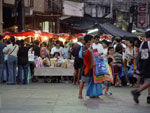
Market stand in the Philippines.
Source: ArtToday, Inc.
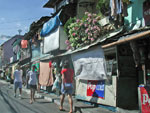
Market stand in the Philippines.
Source: ArtToday, Inc.
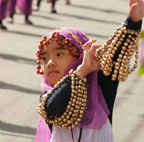
Pahimis Coffee Festival is held once a year.
Source: ArtToday, Inc.
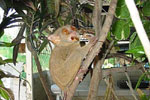
The Tarsier monkey is about 6 inches long.
Source: ArtToday, Inc.

Carabao, also known as a Water Buffalo.
Source: ArtToday, Inc.
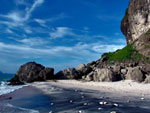
San Antonio, Philippines, Sand Rock Island.
Source: ArtToday, Inc.
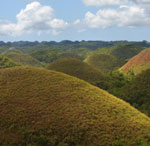
Chocolate Hills in Bohol.
Source: ArtToday, Inc.
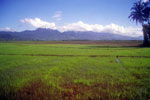
Rice field in Luzon that goes on ‚Äúforever.‚ÄĚ
Source: ArtToday, Inc.
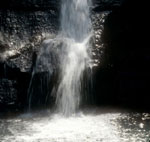
A beautiful waterfall in Bataan.
Source: ArtToday, Inc.
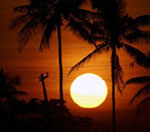
Source: ArtToday, Inc.

In Banaue (northern Philippines), these rice terraces were created 2,000 years ago.
Source: ArtToday, Inc.
History
Speaking of our history, the Philippines was originally settled thousands of years ago by nomadic Negritos or Aetas from Sumatra and Borneo, making their way across then-existing land bridges. These aboriginal Filipinos now represent an insignificant minority, many of whom have not abandoned their primitive ways, still living in isolated tribal mountain villages.
Subsequently, large groups of Indonesian and Malayan peoples arrived in continuous waves, the earliest by land bridges and then later on boats. These people came to be the majority, whose physical features most closely resemble those of the typical Filipinos of today.
The Malays were not united. Instead, they settled in small, independent and scattered communities called barangays. Each barangay was composed of as many as 100 families and was led by a petty king called a datu.
Today, a version of the barangay of olden times is used throughout the country. It is the smallest local government unit, further subdividing cities and municipalities. It is headed by a locally elected barangay captain instead of the old despotic datu, except for a few certain autonomous regions in Southern Philippines.
The Malays had only barely established themselves when Chinese, Arab and Indian traders, merchants and settlers streamed into the country leaving more traces in Filipino genetics.
Explorer Ferdinand Magellan’s rediscovery of the islands in 1521 heralded 377 years of Spanish colonial rule. In 1542, the islands were named Las Filipinas in honor of the crown prince of Spain, later King Philip II. The Spaniards spread their religious and cultural influences throughout the archipelago. Because of this, the Philippines is the only predominantly “Christian” nation in all of Asia.
At the turn of the century, when the Spanish-American War ended, the country was ceded to the United States under the terms of the Treaty of Paris. The United States controlled the islands until independence in 1946, except for a brief period of Japanese occupation (from 1942-1945) during World War II.
Because of this blend of American and Spanish influences, part of our culture has become westernized. Young people, especially in the cities, keep up with the latest fashion, music, dance, art and technology from overseas. But sadly, over the years following independence, the Philippines has gone from one of the richest countries in Asia to one of the poorest.
A land of many colorful cultures, there are at least eight major ethnic groups in the country, representing the eight major native dialects spoken within the islands. The foremost of them is Tagalog (meaning “river-dweller”), the most extensive and well-developed, which forms the basis for the national language: Filipino.
Aside from Filipino, English, first introduced in the islands in 1762 by British invaders, is the second official language and is the medium of instruction in higher education. It is also the language used in the media, business and government.
Philippine social strata present stark contrasts between extreme wealth and extreme poverty. It is said that 90% of the country’s wealth is in the hands of only 10% of its population, while the remaining 10% of the wealth is, even then, unevenly distributed among the remaining 90% populace.
Poverty is most rampant in the far-flung provinces, particularly in the rice- or corn-growing communities, where destitution, hand-in-hand with ignorance, has not permitted the acquisition and implementation of advanced farming techniques and technologies. In extremely backward agricultural districts, families still live in nipas, bamboo and thatch-roofed huts built on stilts.
In the rural countryside, most families grow rice, corn, sugarcane, coconuts, bananas, pineapples and mangoes for a living. They also raise water buffalo (carabao), ducks, goats and chickens. Farmers plow their fields behind carabao, churning up the mud to prepare for planting. Afterward, women and teens carefully sow tender rice seedlings in a few inches of mud and water.
Every morning, women go to local markets to buy the day’s food—rice, fruit, meats and vegetables. Small stores on street corners sell an assortment of food items, household items and other general merchandise.
Families in the province, although often poor, are so hospitable to guests that they bring out their most expensive and long-kept household belongings to entertain them.
After graduation, many teens move into the cities for better opportunities, due to jobs being scarce, especially high-paying ones.
Cities
Although not without its depressed areas, our densely-populated urban areas offer an entirely different experience altogether. In general, city-dwellers are afforded more affluent lifestyles than most of their rural counterparts.
In Manila, the city streets are as full of life as any other major Western city. Public utility jeepneys—brightly ornamented versions of the wartime American jeep seen throughout the islands—roar and honk through the inscrutable maze of traffic. Modern skyscrapers—home to multinational corporations, local banks and foreign embassies—rise above the metropolitan skyline. Leading universities, luxurious hotels, arts centers, well-manicured parks, stately museums, government installations and television stations all converge around the metropolis and its contemporary architectural landscape.
Hardly a stone’s throw away are the upper-class and middle-class suburbs and subdivisions, boasting of regal mansions and modern houses. Teens from these parts usually enjoy their spare time in the city’s trendiest leisure spots—restaurants, bars, music lounges, colossal shopping malls and fashion boutiques carrying well-known international labels.
Families
Filipino families are characterized by their close ties and stability. A Filipino family embraces members beyond parents and children. Grandparents are treated with utmost respect and are considered institutions in many homes. Although teens in the country are of diverse social backgrounds, all of them are taught early on to respect their elders and to obey their parents without question.
Divorce is not permitted in the country. This reflects the desire of our people to place a high value on family solidarity. Filipino hospitality has been renowned since ancient times. This is especially noticeable in those living in the provinces still unaffected by a sophisticated life. There, strangers and relatives alike are welcome to the food and bed of the house.
As teens, we consider ourselves blessed to live in a free and beautiful country among a people with a lively and colorful culture.



